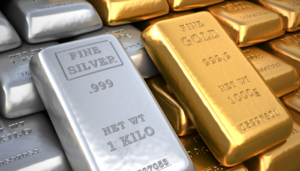Navigating Market Waters: The Interplay of Economic Factors on Gold and Silver Prices
At Extreme Investor Network, we pride ourselves on delivering timely insights that help you navigate today’s complex financial landscape. In light of recent developments, we delve into how trade policies, dollar strength, and industrial demand are shaping the current dynamics in the precious metals market.
The Dollar’s Resurgence and Its Impact on Precious Metals
Recent expectations surrounding former President Trump’s trade policies have sparked a notable inflationary sentiment in the market. The anticipation of an aggressive Federal Reserve response has buoyed the U.S. Dollar (USD), lifting it from a two-week low and infusing it with renewed strength. For investors, this means that the dollar’s upswing could significantly affect the prices of gold and silver.
As the dollar appreciates, gold, typically perceived as a safe-haven asset, tends to experience downward pressure. High demand for the dollar can also cap investors’ interest in precious metals, especially as the broader equity markets display positive momentum. With risk appetite among investors rising, gold’s reaction has been muted, making one thing clear: the interplay between equities and currency strength is crucial to watch.
Silver’s Bright Spot: Industrial Demand Meets Market Volatility
While gold may be facing headwinds, silver (XAG/USD) presents a compelling narrative. Currently trading at $30.62, with an intra-day high reaching $30.74, silver is experiencing a surge fueled by its reputation as both a safe haven and an essential industrial metal.
Investors are turning to silver not only for its traditional store of value but also due to its significant industrial usages. High demand is flowing from booming sectors like renewable energy and technology, where silver is indispensable in manufacturing solar panels and electronic components. As these industries expand, silver’s dual demand trajectory positions it favorably amid economic volatility.
Additionally, expectations surrounding potential Federal Reserve rate cuts and declining bond yields are creating a supportive environment for silver prices. As yield-bearing assets like bonds become less attractive, money is flowing into silver, echoing the asset’s historical resilience.
The Inflation Tug-of-War: Tariffs and Economic Indicators
The immediate future remains complex. The U.S. dollar’s rebound largely stems from concerns regarding looming tariffs on Canadian and Mexican imports, which could escalate inflationary pressures. As the dollar strengthens, gold and silver may take a hit, as foreign investors find these precious metals increasingly expensive.
Despite this, recent economic indicators, such as the Producer Price Index (PPI) and Consumer Price Index (CPI), point toward a potential cooling of inflation. This scenario may pave the way for Fed rate cuts later in the year, which historically has been a boon for precious metals. Lower rates often decrease the appeal of non-yielding assets like gold and silver, making them more attractive as investments.
Keeping an Eye on Global Events
As we move forward, it’s essential for investors to keep their eyes peeled for key global events, such as the upcoming Bank of Japan policy meeting and the global Purchasing Managers’ Index (PMI) releases. These events have the potential to inject volatility into the precious metals market, influencing both gold and silver prices in the near term.
At Extreme Investor Network, we understand that the financial markets are ever-changing. By staying informed and vigilant about these evolving dynamics, you can better position yourself for success. Investors must weigh both domestic policies and international developments as they navigate the intricate tapestry of the stock market.
Get ready, stay informed, and let’s ride the market waves together!

